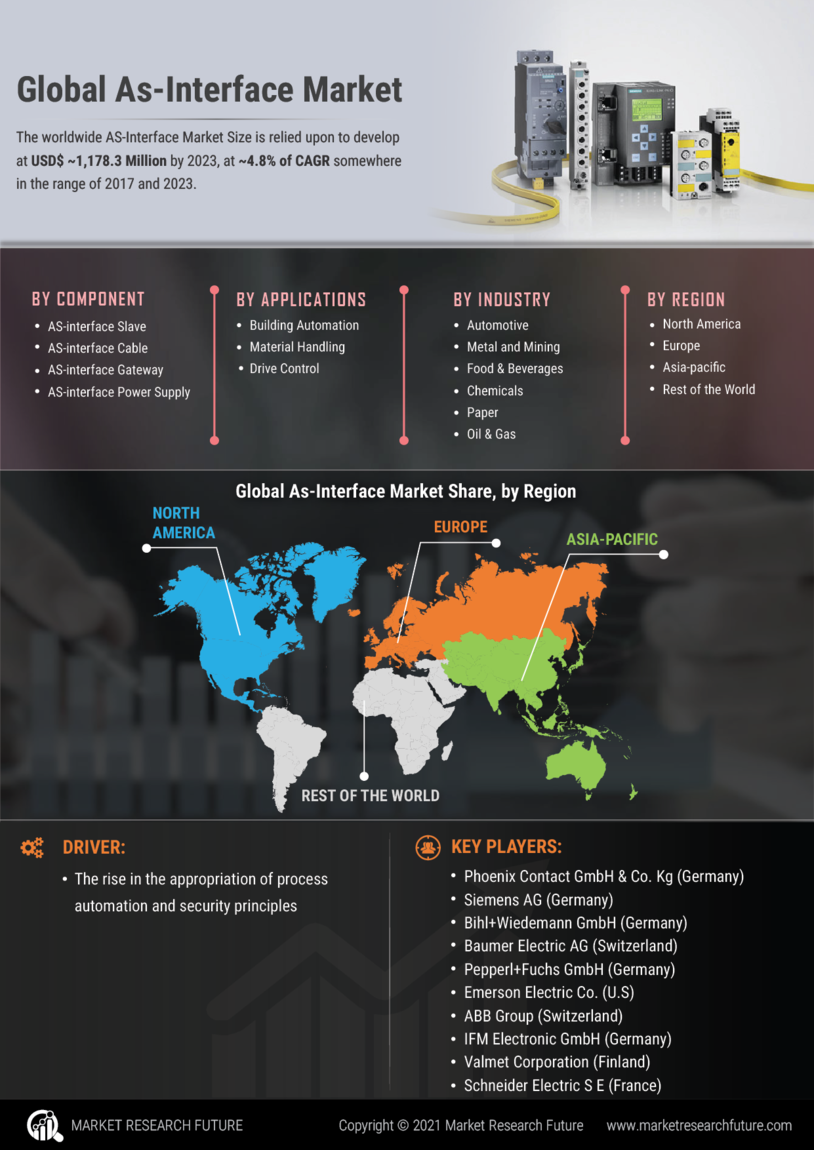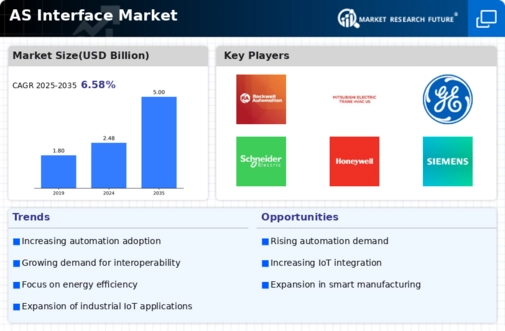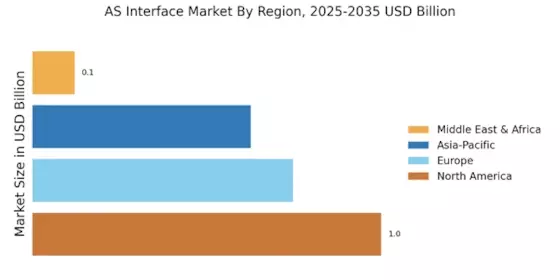Rising Demand for Automation
The AS Interface Market is experiencing a notable surge in demand for automation solutions across various sectors. Industries such as manufacturing, logistics, and process control are increasingly adopting automated systems to enhance operational efficiency. According to recent data, the automation market is projected to grow at a compound annual growth rate of approximately 9% over the next five years. This trend is driven by the need for improved productivity and reduced labor costs. As companies seek to streamline their operations, the AS Interface technology, which facilitates seamless communication between devices, becomes essential. The integration of AS Interface solutions allows for real-time monitoring and control, thereby optimizing processes and reducing downtime. Consequently, the rising demand for automation is a significant driver for the AS Interface Market.
Increased Focus on Safety Standards
The AS Interface Market is witnessing an increased focus on safety standards, particularly in sectors such as manufacturing and transportation. Regulatory bodies are implementing stringent safety regulations to mitigate risks associated with industrial operations. This heightened emphasis on safety is driving the adoption of AS Interface solutions, which are designed to enhance safety protocols through reliable communication and monitoring. For example, the integration of safety-related AS Interface devices can significantly reduce the likelihood of accidents and improve compliance with safety regulations. Data suggests that companies investing in safety technologies can experience a reduction in workplace incidents by up to 40%. As organizations strive to meet these evolving safety standards, the AS Interface Market is likely to benefit from the growing demand for safety-oriented solutions.
Shift Towards Sustainable Practices
The AS Interface Market is increasingly influenced by the shift towards sustainable practices across various sectors. Companies are recognizing the importance of reducing their environmental footprint and are actively seeking solutions that promote energy efficiency and sustainability. The AS Interface technology facilitates the implementation of energy-efficient systems by enabling better monitoring and control of energy consumption. Recent studies indicate that organizations adopting AS Interface solutions can achieve energy savings of up to 25%. This trend aligns with the broader movement towards sustainability, as businesses aim to comply with environmental regulations and meet consumer expectations for eco-friendly practices. Consequently, the shift towards sustainable practices is a significant driver for the AS Interface Market, as it encourages the adoption of technologies that support energy conservation.
Growing Investment in Smart Infrastructure
The AS Interface Market is benefiting from the growing investment in smart infrastructure initiatives. Governments and private entities are increasingly allocating resources towards the development of smart cities and intelligent transportation systems. This investment is aimed at enhancing urban living through improved connectivity and efficiency. The AS Interface technology plays a crucial role in these initiatives by providing reliable communication between various components of smart infrastructure. For instance, the integration of AS Interface solutions in traffic management systems can optimize traffic flow and reduce congestion. Recent projections suggest that the smart infrastructure market could reach a valuation of over 1 trillion dollars by 2030. As the demand for smart infrastructure continues to rise, the AS Interface Market is likely to experience substantial growth driven by these investments.
Technological Advancements in Communication Protocols
Technological advancements in communication protocols are playing a pivotal role in shaping the AS Interface Market. The evolution of industrial communication standards has led to the development of more efficient and reliable systems. For instance, the introduction of advanced AS Interface protocols enhances data transmission speeds and improves interoperability among devices. This is particularly relevant as industries increasingly rely on interconnected systems for data exchange. Recent statistics indicate that the adoption of advanced communication protocols can reduce system integration costs by up to 30%. As manufacturers seek to leverage these advancements, the AS Interface technology stands out as a robust solution for ensuring seamless connectivity. The ongoing innovation in communication protocols is likely to propel the growth of the AS Interface Market, as businesses prioritize efficient and effective communication solutions.

















Leave a Comment